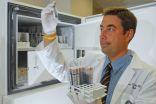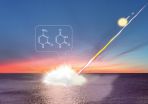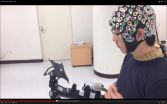(Press-News.org) A group of clinicians and geochemists are working to develop a test for the most common form of primary liver cancer, HCC (Hepatocellular Carcinoma). HCC kills over 600,000 people worldwide every year. It usually develops from chronic liver disease such as hepatitis or cirrhosis, but there is no good biochemical test to indicate when the cancer develops, meaning that even for patients most at risk, it is nearly impossible to know when a cancer may develop until symptoms appear. Now a multi-national group of scientists are developing a new test for HCC, based on methods used to measure the stable isotope compositions of rocks and minerals.
Elements in nature tend to have different isotopes (the same number of protons, but different numbers of neutrons). So for example, in nature, 99% of the carbon is stable carbon-12, 1% is stable carbon-13, and radioactive carbon-14 occurs in trace amounts. This distribution of stable isotopes also occurs with other elements, such as copper and sulphur.
It has been known for some time that in cancer, the body's copper regulation can be affected. The researchers decided to look at whether the ratios of different copper isotopes varied between HCC patients and normal controls. They compared 23 male HCC patients with 20 controls; they found that the blood of patients with liver cancer had an enriched quantity of certain isotopes in comparison to control patients.
Comparing copper isotopes 65Cu and 63Cu, they found that HCC patients have around 0.4 parts per thousand more 63Cu relative to 65Cu than the control patients. This difference was also seen with the Sulphur isotopes 32S and 34S, with blood of patients with HCC is around 1.5 parts per thousand richer in 32S relative to 34S than is normally found.
Group leader, geochemist Vincent Balter (Lyon, France) said
"The findings are interesting and potentially significant. We found that the ratio of 65Cu to 63Cu was higher in the blood of cancer patients than in the blood of controls. Preliminary results seem to show that these ratios are in fact reversed in the tumours themselves, which implies that there is a partition of isotopes between the blood and the tumour.
This opens the way for a blood test. At the moment the results are preliminary, but if we can confirm the validity of an isotopic test for HCC, this might have a significant impact on patients who have chronic liver disease, who risk developing liver cancer".
He continued:
"There is increasing evidence that copper metabolism is significant in many cancers, and recently it has been found that copper chelation agents, which mop up copper in the body, can slow and perhaps even halt the growth of some tumours. What we have found may go some way to explaining some of the mechanisms of the growth of these tumours"
Speaking for the Goldschmidt conference, Associate Professor Rob Newton of the University of Leeds said:
"This is an example of how techniques developed for one field can transfer to another. The type of isotopic analysis used by Balter and colleagues is commonly used in Earth Sciences, from studies on the Moon's formation to those on past changes in ocean and atmosphere chemistry.
I am excited by the idea that one could make isotopic mass balances between organs as we are used to doing between Earth reservoirs like the mantle and crust. They will have, however, to face new difficulties, for instance a significant variability in the isotopic measurements, a common feature of biological samples, and to develop cheap, high throughput and user friendly methods for sample preparation and analysis. However, it's likely that we will continue to see exciting new applications of these isotopic techniques in other fields as this study shows."
INFORMATION:
COLUMBUS, Ohio - Employees with a racially diverse group of friends outside of work may actually perform better at their jobs, a new study suggests.
Researchers found that workers who had more different-race friends in their personal lives than their co-workers also tended to have a more racially diverse network of friends on the job. This broader network was linked to employees who did more tasks beyond their job responsibilities and who, under certain circumstances, had more trust in their supervisors.
"Your friends outside of work actually have this connection to ...
This news release is available in French. This news release is available in French. New research shows that teaching young adolescents practical cooking skills leads to positive changes for the entire family. In an article published today in Applied Physiology, Nutrition, and Metabolism, an NRC Research Press journal (a division of Canadian Science Publishing), researchers evaluated the Kinect-Ed presentation and found an increase in the frequency of family dinners after participation.
Kinect-Ed, a 90-minute motivational nutrition education presentation, was ...
BOSTON, Aug. 18, 2015 -- Cranberries are often touted as a way to protect against urinary tract infections, but that may be just the beginning. Researchers fed cranberry extracts to mice with colon cancer and found that the tumors diminished in size and number. Identifying the therapeutic molecules in the tart fruit could lead to a better understanding of its anti-cancer potential, they say.
The team will describe their approach in one of more than 9,000 presentations at the 250th National Meeting & Exposition of the American Chemical Society (ACS), the world's largest ...
BOSTON, Aug. 18, 2015 -- The use of solar energy in the U.S. is growing, but panels on rooftops are still a rare sight. They cost thousands of dollars, and homeowners don't recoup costs for years even in the sunniest or best-subsidized locales. But scientists may have a solution. They report today the development of a unique, "green" antenna that could potentially double the efficiencies of certain kinds of solar cells and make them more affordable.
The researchers are presenting their work at the 250th National Meeting & Exposition of the American Chemical Society (ACS). ...
INDIANAPOLIS -- People being treated for bipolar disorder and other psychiatric illnesses are at greater risk of attempting suicide, but physicians may now have tools to predict which of those individuals will attempt it and intervene early to prevent such tragedies from occurring.
Researchers at Indiana University School of Medicine reported Tuesday in the Nature Publishing Group's leading journal in psychiatry, Molecular Psychiatry, that they have developed blood tests and questionnaire instruments that can predict with more than 90 percent accuracy which of those patients ...
An unprecedented potential "molecular tweezer" called CLR01, reported in the journal eLife, not only blocks HIV and other sexually transmitted viruses, but also breaks up proteins in semen that boost infection.
Semen is the main vector for sexual HIV transmission. It contains proteins that assemble into very stable polymers called amyloid fibrils, which can enhance HIV infectivity by up to 10,000 times. Scientists led by the University of Pennsylvania (USA) and Ulm (Germany) now show that a molecule with the shape of a tweezer not only destroys HIV particles but also ...
A new study shown that meteorite impacts on ancient oceans may have created nucleobases and amino acids. Researchers from Tohoku University, National Institute for Materials Science and Hiroshima University discovered this after conducting impact experiments simulating a meteorite hitting an ancient ocean (Fig. 1).
With precise analysis of the products recovered after impacts, the team found the formation of nucleobases and amino acids from inorganic compounds. The research is reported this week in the journal Earth and Planetary Science Letters.
All the genetic information ...
Children with better academic and behavioral functioning when they start kindergarten often have better educational and societal opportunities as they grow up. For instance, children entering kindergarten with higher reading and math achievement are more likely to go to college, own homes, be married, and live in higher-income neighborhoods as adults. Now a new study points to very early roots of differences in school readiness, with growth in vocabulary playing a particularly important role. The study found that children with larger oral vocabularies by age 2 arrived at ...
Adolescents who have romantic relationships tend to have more problems with psychosocial adjustment. In contrast, young adults who have romantic relationships tend to have fewer problems with psychosocial adjustment. Although the links between having a romantic relationship and psychosocial adjustment change with age, a new longitudinal study has found that it's not just having a relationship that matters, but the quality of the relationship: Higher-quality romantic relationships are associated with fewer psychosocial difficulties across adolescence and young adulthood.
The ...
Scientists working at Korea University, Korea, and TU Berlin, Germany have developed a brain-computer control interface for a lower limb exoskeleton by decoding specific signals from within the user's brain.
Using an electroencephalogram (EEG) cap, the system allows users to move forwards, turn left and right, sit and stand simply by staring at one of five flickering light emitting diodes (LEDs).
The results are published today (Tuesday 18th August) in the Journal of Neural Engineering.
Each of the five LEDs flickers at a different frequency, and when the user focusses ...


